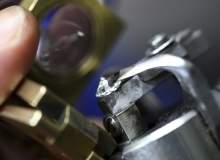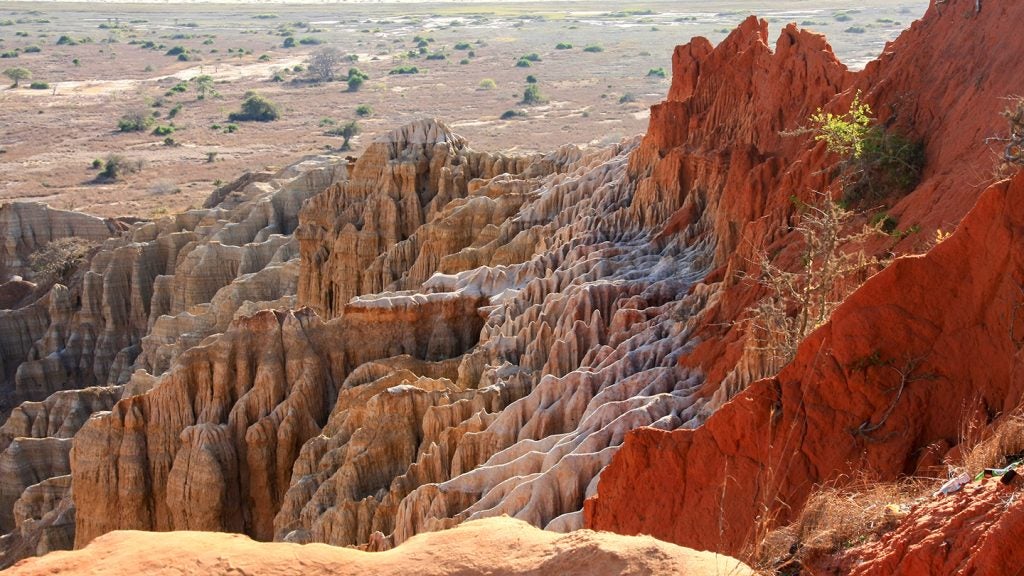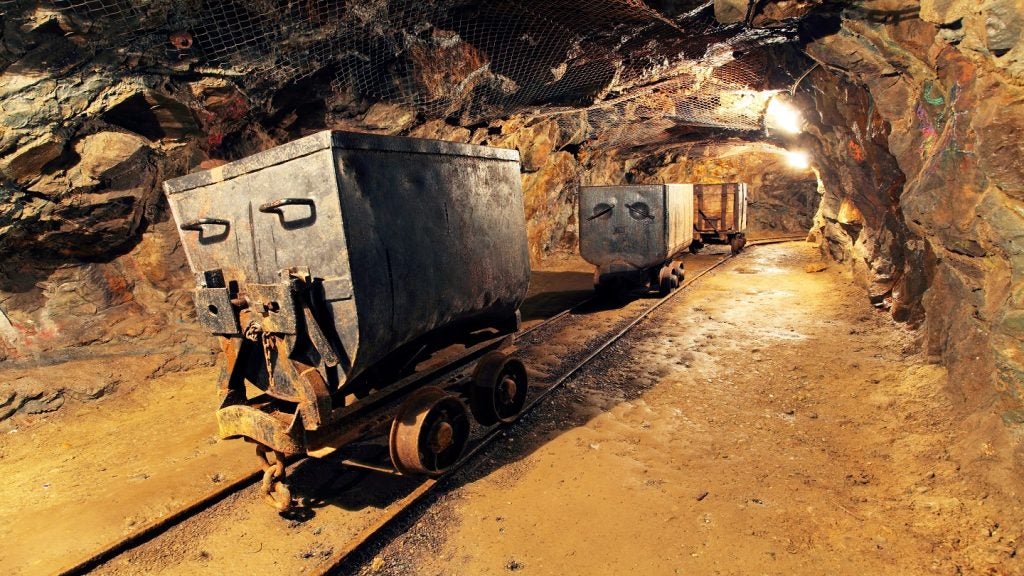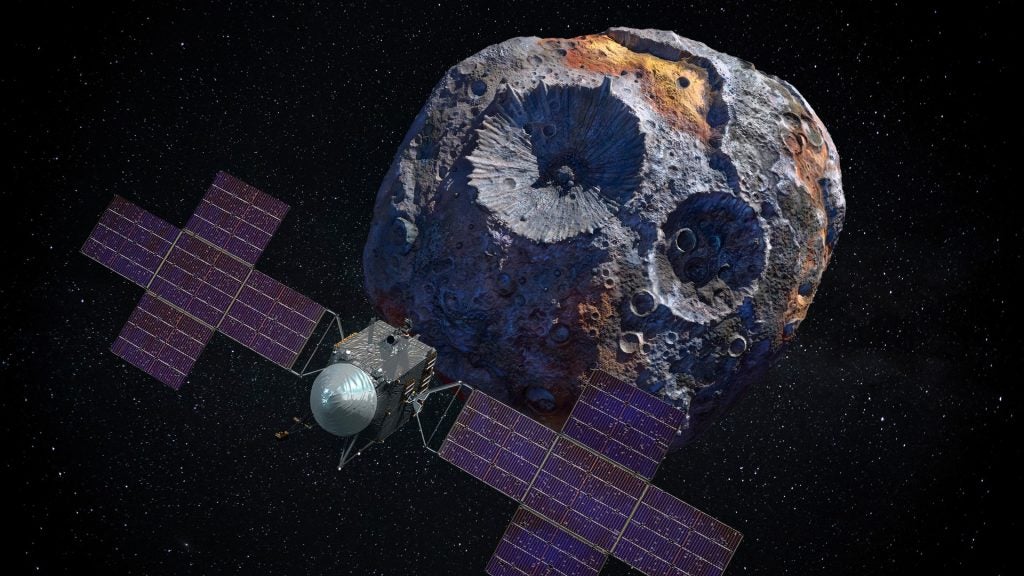

Diamonds: a girl’s best friend, rare, stunningly beautiful, and often considered the truest expression of love. But not even the much coveted and most precious gem of them all can escape the commodities downturn that is gripping the mining industry.
In fact, diamond prices have fallen around 12%-15% since 2014, with further reductions in price needed to balance the market, according to a report by Morgan Stanley.
The drop in diamond prices has contributed to the accumulative woes of multi-national company Anglo American, one of the world’s largest mining companies.
In December last year, the Johannesburg-based company, which produces – among other minerals – copper, nickel, platinum and iron, announced that it would shed as much as 60% of its mines and half its workforce, after its share price plummeted by 78% over the past year due to a protracted commodity price slump.
See Also:
However, the company decided to retain its subsidiary the De Beers Group, which it owns in conjunction with the Government of the Republic of Botswana, which has the remaining 15% stake.
How well do you really know your competitors?
Access the most comprehensive Company Profiles on the market, powered by GlobalData. Save hours of research. Gain competitive edge.

Thank you!
Your download email will arrive shortly
Not ready to buy yet? Download a free sample
We are confident about the unique quality of our Company Profiles. However, we want you to make the most beneficial decision for your business, so we offer a free sample that you can download by submitting the below form
By GlobalDataThe current situation
De Beers, the world’s largest, and arguably the most famous, diamond producer has suffered from a number of factors including: an economic slowdown in major markets such as China and India; a surplus of rough diamonds to the global market; diamond recycling; and increasing competition from the synthetic market, which has increased in popularity, particularly with younger generations. The company’s 2015 sales were down by 58% compared with 2014.
De Beers generated $540m during its first sales cycle of this year, which ended on 25 January, according to the company that more than doubled sales of $248m in the last sales cycle of 2015. The company tried to stabilise the diamond industry by cutting output last year.
However, although strong early-year results boosted Anglo’s shares at the time by more than 11%, analysts have been quick to caution that this doesn’t mean the diamond market has turned a corner; it is not out of the red yet.
Even De Beers CEO Philippe Mellier said in an interview with the Financial Times in May that the industry’s recovery would be very “fragile”.
“The market is not going to bounce back like it did after the last big problems,” he said, referring to the recovery after 2009, when De Beers cut output by half following the global financial crisis that choked off diamond buying.
So what challenges can Anglo expect in regards to De Beers in the near future, and what can it do to turn the company’s fortunes around?
No V-shaped recovery
According to a November 2015 Morgan Stanley report on Anglo American and De Beers, the “diamond cycle is very deep” and prices will not show a V-shaped recovery, but will only gradually increase once the market is balanced again.
The report added: “Several structural risks continue to affect the outlook for platinum and diamonds. In diamonds these could potentially be resolved but are likely to require structurally higher marketing expenses and potentially more capital employed”.
One of these risks includes competition from the synthetic diamond market, which many in the industry dismissed at first.
But synthetic diamonds are here to stay, say analysts. The number of ‘lab-grown diamonds’ are increasing, and the companies who produce them include Pure Grown's IIa Technologies, Scio Diamonds in South Carolina, Washington Diamonds near Washington D.C., New Diamond Technology in Russia and Brilliant Earth in Canada.
The industry has garnered interest from ethical and younger buyers, and has gained investment from celebrities such as Leonardo DiCaprio and investors in California’s Silicon Valley.
Bumpy road ahead
However, synthetic diamond sales are still marginal. Approximately $1bn worth of lab-grown diamonds are said to be sold worldwide each year, compared to the $22bn that mined diamonds bring in at wholesale price.
Nevertheless, there is always a concern that synthetic diamonds may be sold as mined diamonds, as it requires expert equipment to tell the difference between the two. Furthermore, the arrival of lab-grown diamonds challenges the widely-held assumption that diamond prices could only increase because of a peak in the supply of natural diamonds and strong Asian demand, says an ABN-AMRO January report.
“After the global financial crisis, diamond prices increased sharply mainly based on these assumptions,” the report states.
“Since 2006 annual diamond mining production in carats has declined by 28%, or on average by 3% annually…The production of lab-grown diamonds could more than compensate for the drop in supply in the coming years. So substantial changes in the diamond sector are upon us because crucial forces are pointing towards change.”
The report adds that the industry needs to “embrace” these changes and not simply hope they are not structural.
“The longer the industry is fighting these changes, the more substantial and painful they may be down the road,” it notes. “The best strategy is to embrace them and recognise that bold adjustments need to be made. Another strategy could be to search for the niche in the market or to negotiate better prices from the miners.”
Consulting firm Frost & Sullivan also states that Anglo and the industry as a whole must invest heavily in generic marketing for diamonds, particularly as younger generations have been exposed to significantly less diamond marketing than the older generations.
The US remains the biggest market for diamonds, accounting for 42% of polished sales. Most recent figures for jewellery and watch sales remain “encouraging”, according to Frost & Sullivan’s report, and Chinese end use demand has grown at 5%-7 % year-on-year.
But even if sales level out, the industry faces other challenges that will put pressure on recovery, including: reputational risks driven by environmental concerns; pressure for in-country beneficiation; and pressure from NGOs to justify rough diamond prices. NGOs are increasingly challenging industry to show that the right prices are being paid for rough diamonds exported from producing countries, to ensure fair return to miners and government taxes.
The future of De Beers
According to a February RBC Capital Markets Diamond Digest report that claims to have “deconstructed De Beers to expose a market value on its diamond business and created an historical PE [price/earnings] series”, the company has a very volatile rating history.
“The new De Beers could lay claim to being more focused and perhaps having lower risk as part of the greater Anglo American group,” states the RBC report. “But what seems clear, we think, is that even within Anglo De Beers' rating is likely to remain volatile and will probably not achieve the premium some might expect given the different market dynamics for its product.”
A Frost & Sullivan’s November 2015 report adds: “Synthetic diamonds, recycling, potential non-performing loans in the midstream segment plus structural changes to the industry are key threats to De Beers' profitability.”
“More generic marketing for diamonds may help to partly offset the first few issues. Technology may help to offset the latter but it may also require more capital employed by the mining companies.”
The message is clear: the diamond industry is irreversibly changing and recovery is going to be slow. In the meantime, however, Anglo must continue to act with investment and controlled supply for a return to market balance.
“For the midstream of the diamond sector, 2016 will be a year of transition as inventories are brought into control and, hopefully, margins start returning to the cutters and polishers,” states RBC Capital Markets in its January Diamond Digest.
“This will require the larger players to continue supplying only what the processing sector needs and at prices which make economic sense to cut and polish. Our view is that De Beers and Alrosa [a Russian group of diamond mining companies], with the greatest exposure to the sector given their production, are likely to continue holding back goods.







